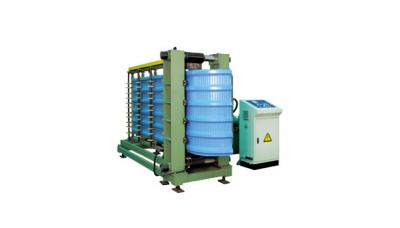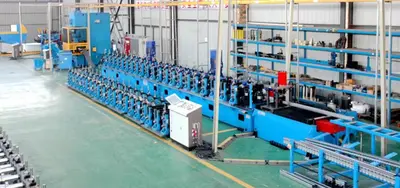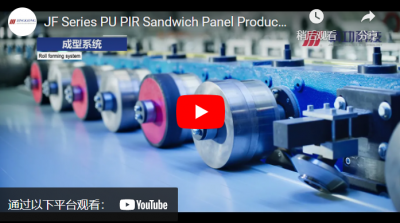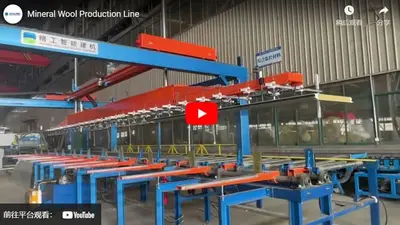Characteristics and Application Scenarios of Rock Wool Sandwich Panels
Rock wool sandwich panel is a new type of building material with characteristics such as thermal insulation, fire resistance, corrosion resistance, good weather resistance, and easy construction. It is widely used in industrial buildings, cold storages, warehouses, commercial buildings, and other fields. The excellent thermal insulation performance of rock wool sandwich panels can effectively reduce the temperature difference between indoor and outdoor environments, minimize energy loss, improve energy efficiency, and better meet green environmental protection requirements.
Rock Wool Production Lines: Production Process of Rock Wool Sandwich Panels
The production principle of rock wool sandwich panels is to composite steel plates with rock wool, forming a sandwich panel. The production involves multiple processes and equipment, primarily including the following steps:
Steel Plate Forming
Steel plate forming is the first step in the production line of rock wool sandwich panels. It requires cutting machines to cut the steel plates to the required length and width. After cutting, painting and spraying treatments are needed to ensure the surface of the steel plate is smooth and aesthetically pleasing. The completed steel plates are joined end to end, forming a continuous wall panel.
Rock Wool Processing
Rock wool is the core material of rock wool sandwich panels and needs to be processed and treated using rock wool production line equipment. Firstly, the required rock wool boards should be cut and compressed to form the same size and shape as the steel plates. Then, the rock wool boards are fed, stirred, and mixed to ultimately obtain rock wool cores with the appropriate density and toughness.
Composite Forming
After the rock wool boards are processed, the steel plates and rock wool cores need to be combined to form rock wool sandwich panels. The rock wool boards are placed between the steel plates and sent through a conveyor belt into a embossing machine for embossing and compacting. During the compacting process, the steel plates and rock wool cores are heated and pressed to form integrated sandwich panels. Finally, the panels are cut to the required length and width using a cutting machine to produce the final rock wool sandwich panels.
Application Scenarios of Rock Wool Sandwich Panels
Rock wool sandwich panels have excellent thermal insulation and fire resistance performance, making them widely used in the following fields:
Industrial Buildings
Industrial buildings are one of the primary application areas for rock wool sandwich panels. Rock wool sandwich panels produced by rock wool production lines have characteristics such as good thermal insulation, good fire resistance, easy construction, and low cost, making them an ideal choice for industrial building walls, roof panels, and insulation materials.
Cold Storage
Rock wool sandwich panels produced by rock wool production lines have excellent thermal insulation performance, making them commonly used in cold storages and commercial refrigeration buildings. In the construction of cold storages, using rock wool sandwich panels can achieve better insulation effects, making internal temperature control more stable and ensuring the quality of stored items.
Commercial Buildings
Rock wool sandwich panels are aesthetically pleasing and fire-resistant, making them commonly used for interior decorations and window and door manufacturing in commercial buildings. Rock wool sandwich panels can also be made into decorative materials such as ceilings, partitions, and wall panels, which are both aesthetically pleasing and functional, providing insulation, and fire resistance.
In summary, rock wool production lines play an important role in rock wool production. Rock wool production lines not only improve production efficiency and reduce production costs but also ensure the stability and consistency of product quality. Additionally, rock wool production lines have advantages such as energy saving, environmental protection, and simple operation, providing strong support for the sustainable development of rock wool production enterprises. Rock wool sandwich panels have various excellent performances and broad application prospects in housing construction, commercial buildings, and other fields.


 CN
CN
 EN
EN
 fr
fr  de
de  es
es  it
it  ru
ru  pt
pt  ar
ar  th
th  pl
pl  ro
ro 







 Call us on:
Call us on:  Email Us:
Email Us:  #1809, Jianhu Rd, Keqiao, Shaoxing, Zhejiang, China
#1809, Jianhu Rd, Keqiao, Shaoxing, Zhejiang, China 